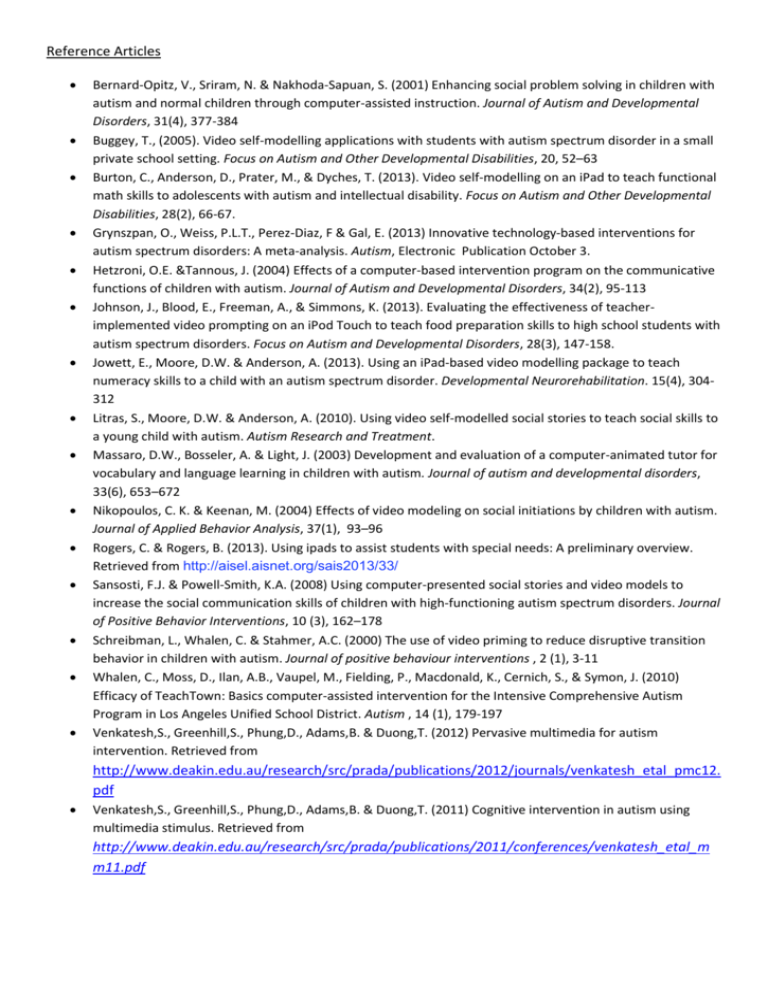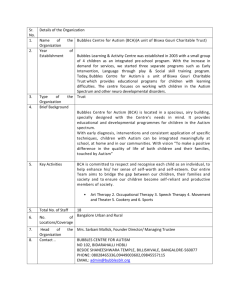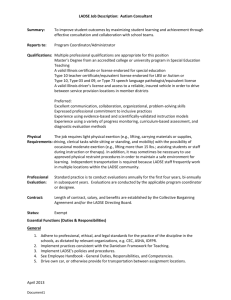Reference Articles - Autism Apps Website
advertisement

Reference Articles Bernard-Opitz, V., Sriram, N. & Nakhoda-Sapuan, S. (2001) Enhancing social problem solving in children with autism and normal children through computer-assisted instruction. Journal of Autism and Developmental Disorders, 31(4), 377-384 Buggey, T., (2005). Video self-modelling applications with students with autism spectrum disorder in a small private school setting. Focus on Autism and Other Developmental Disabilities, 20, 52–63 Burton, C., Anderson, D., Prater, M., & Dyches, T. (2013). Video self-modelling on an iPad to teach functional math skills to adolescents with autism and intellectual disability. Focus on Autism and Other Developmental Disabilities, 28(2), 66-67. Grynszpan, O., Weiss, P.L.T., Perez-Diaz, F & Gal, E. (2013) Innovative technology-based interventions for autism spectrum disorders: A meta-analysis. Autism, Electronic Publication October 3. Hetzroni, O.E. &Tannous, J. (2004) Effects of a computer-based intervention program on the communicative functions of children with autism. Journal of Autism and Developmental Disorders, 34(2), 95-113 Johnson, J., Blood, E., Freeman, A., & Simmons, K. (2013). Evaluating the effectiveness of teacherimplemented video prompting on an iPod Touch to teach food preparation skills to high school students with autism spectrum disorders. Focus on Autism and Developmental Disorders, 28(3), 147-158. Jowett, E., Moore, D.W. & Anderson, A. (2013). Using an iPad-based video modelling package to teach numeracy skills to a child with an autism spectrum disorder. Developmental Neurorehabilitation. 15(4), 304312 Litras, S., Moore, D.W. & Anderson, A. (2010). Using video self-modelled social stories to teach social skills to a young child with autism. Autism Research and Treatment. Massaro, D.W., Bosseler, A. & Light, J. (2003) Development and evaluation of a computer-animated tutor for vocabulary and language learning in children with autism. Journal of autism and developmental disorders, 33(6), 653–672 Nikopoulos, C. K. & Keenan, M. (2004) Effects of video modeling on social initiations by children with autism. Journal of Applied Behavior Analysis, 37(1), 93–96 Rogers, C. & Rogers, B. (2013). Using ipads to assist students with special needs: A preliminary overview. Retrieved from http://aisel.aisnet.org/sais2013/33/ Sansosti, F.J. & Powell-Smith, K.A. (2008) Using computer-presented social stories and video models to increase the social communication skills of children with high-functioning autism spectrum disorders. Journal of Positive Behavior Interventions, 10 (3), 162–178 Schreibman, L., Whalen, C. & Stahmer, A.C. (2000) The use of video priming to reduce disruptive transition behavior in children with autism. Journal of positive behaviour interventions , 2 (1), 3-11 Whalen, C., Moss, D., Ilan, A.B., Vaupel, M., Fielding, P., Macdonald, K., Cernich, S., & Symon, J. (2010) Efficacy of TeachTown: Basics computer-assisted intervention for the Intensive Comprehensive Autism Program in Los Angeles Unified School District. Autism , 14 (1), 179-197 Venkatesh,S., Greenhill,S., Phung,D., Adams,B. & Duong,T. (2012) Pervasive multimedia for autism intervention. Retrieved from http://www.deakin.edu.au/research/src/prada/publications/2012/journals/venkatesh_etal_pmc12. pdf Venkatesh,S., Greenhill,S., Phung,D., Adams,B. & Duong,T. (2011) Cognitive intervention in autism using multimedia stimulus. Retrieved from http://www.deakin.edu.au/research/src/prada/publications/2011/conferences/venkatesh_etal_m m11.pdf







